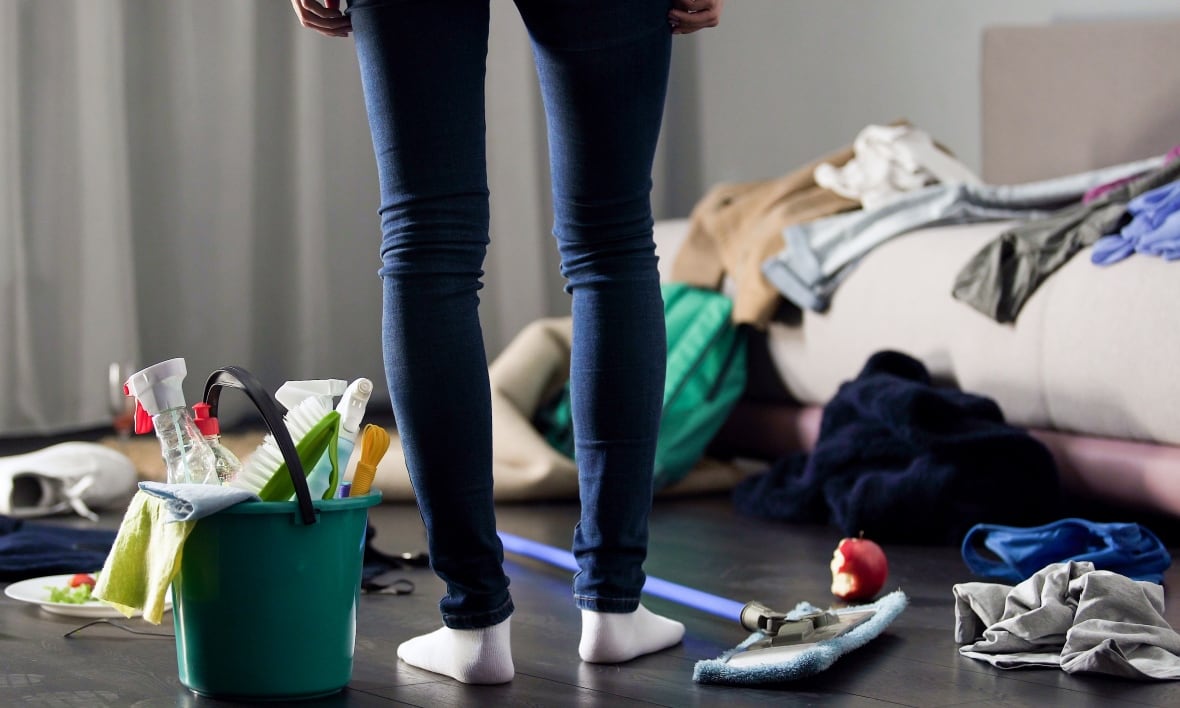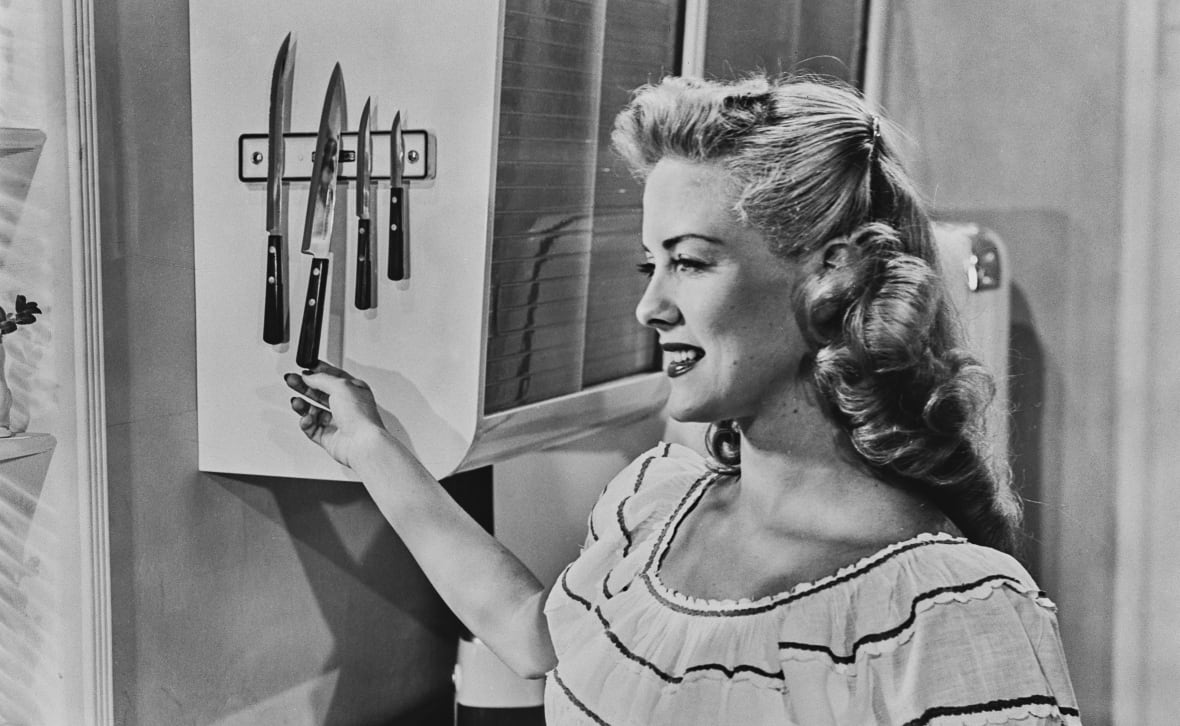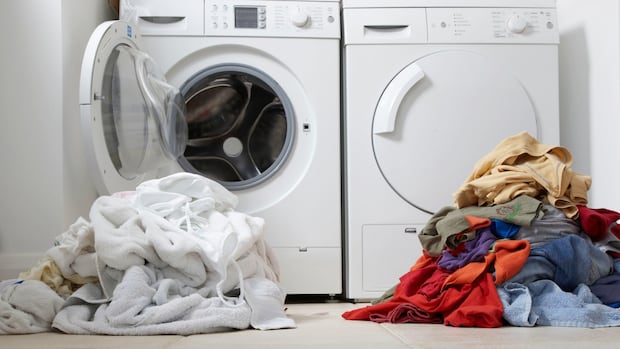Wash. Rinse. Repeat.
We could be talking about laundry just as easily as we could be describing decades of research on the household division of labour. Like the laundry that never goes away, research on the gender gap has shown us the same pattern over and over: women still take on more of the domestic tasks than men.
Now, new research led by reserachers at the University of Alberta helps shed some light on why closing that gap is such a challenge. After following 520 Edmontonians over 25 years, the researchers found what they called a gendered pattern of housework starting in their twenties and persisting well into midlife — with parenthood only widening the gap.
Once the patterns are present in a relationship, they tend to stay that way, noted the study, which was recently published in the Journal of Family Psychology.
We tend to have this assumption that relationships are dynamic and constantly evolving as circumstances change, but this study highlights how that isn’t really the case, lead researcher Matthew Johnson, a family science professor at the University of Alberta, told CBC News.
“A big realization scientifically in the last 15 years is that relationships are actually remarkably stable over very long periods of time,” Johnson said. “And this is the first study to really show that’s also the case for household tasks.”
The study examined survey data from the Edmonton Transitions Study for the same 520 people, half of them women, who were all born in 1967. They were surveyed between 1992 and 2017 — when they were 25, 32, 43 and 50 years old — on who in their household did the bulk of certain tasks.
Women consistently did the majority of the cooking, kitchen cleaning, grocery shopping, housecleaning, laundry and overall housework in this study. But it’s important to keep in mind the results are based on responses from people who are currently about 57 years old.
Sonja Baikogli and Jen Murtagh, founders of Maturn, which supports mothers with their transition into motherhood, are putting the spotlight on the motherhood penalty — a significant hurdle faced by working mothers, hindering their path to achieving gender equality.
Still, it’s interesting that this study suggests decisions that are made early in relationships about the distribution of chores persist over the life of those relationships, said Marina Adshade, an assistant professor of teaching at the University of British Columbia who specializes in economics and gender, who was not involved in the study.
“What this data tells us is that [women] can expect to continue to do a greater share of work later on, possibly even when she planned on building her own career and certainly when they start having children,” said Adshade, who is also the author of Dollars and Sex: How Economics Influences Sex and Love.
“The moral of the story is, essentially, don’t start ironing his shirts at the start of the relationship if you don’t want to iron his shirts for the rest of your life,” said Adshade.
‘The pace of change has been slow’
The findings mirror the data in a recent report from Ottawa-based Vanier Institute of the Family. Statistics Canada data analyzed by the independent national think-tank shows that despite gains with men taking on more household labour, women still continue to do more unpaid work than men.
In 2020, for instance, women over age 20 living with a partner were more likely than men to do the bulk of the laundry, dishes, housework, meal prep, and grocery shopping, according to Stats Can. The only task mostly taken on by men was household finances, with dishes and housework being the most likely to be distributed evenly.
“Time-use data reveal that the pace of change has been slow and women continue to do substantially more unpaid work than men. The division of tasks remains gendered,” noted the Vanier Institute’s report, released in November.
This was true regardless of their labour force participation and changes in recent years.The Vanier Institute analyzed Statistics Canada’s time-use data from 2022, and found that, among people who worked from home, women spent about 40 minutes more per day on unpaid housework than men.
The same trend was found for child-care duties among parents. When parents worked from home, mothers spent an average of about 52 minutes more per day with children than fathers did. And if both parents worked outside the home, they spent less time with their children than those who telework.
But of those parents, mothers still spent more time with their children than fathers, again by about 52 minutes per day.

Why does the gap persist?
It’s “not surprising,” then, that among couples in 2016, women were less likely to report being satisfied with the division of housework, and more likely to say they were dissatisfied, said the Vanier Institute, citing Stats Can General Social Survey results.
“The ‘double burden’ of paid and unpaid work can affect the wellbeing of women, who are left with a greater overall workload and less time to rest,” it explained.
A lot of the progress toward gender equality has occurred in the public sphere, like with employment and education, said Yue Qian, an associate professor of sociology at the University of British Columbia in Vancouver who specializes in family studies and was not involved in either study.
“But on the other hand, we have seen much less progress made by men … in the private sphere,” Qian said.
“Despite the fact that more and more women are working outside the home and getting more education, at home they are still shouldering a disproportionate share of housework and child care.”

Historically, there were good reasons for the unequal distribution of household chores — men contributed more to household income and women contributed more to home production, explained Adshade.
But this is less true today than it has ever been, she added. For instance, the Vanier Institute also points out that there’s been a rise female family breadwinners in Canada, with women earning more than 50 per cent of the family income in a third of gender-different couples in 2022.
“I genuinely believe that the gap exists because men are raised to believe that women will take care of them, and women are raised to believe that they will take care of men. It is a cultural cycle that is extremely persistent,” Adshade said.
Will it ever change?
That said, there are signs that these roles may be shifting.
For instance, the Vanier Institute reports that parental benefits are being used by a growing proportion of fathers. Citing Statistics Canada data, in 2022, 31 per cent of fathers outside Quebec with insurable employment claimed or intended to claim parental benefits. That’s nearly triple the percentage from 2017, the institute notes.
Other studies have found that Millennial dads spend more time with their children than previous generations, stay-at-home dads are on the rise, and men are taking on more household responsibilities than they have in the past.
When you look back historically and compare to now, yes, there’s been progress, Qian said. But men still need to step up in the private sphere to even the playing field, she added.
She adds that ensuring a woman’s invisible labour is truly recognized — the planning, researching, organizing, emailing, and co-ordinating that’s also part of modern daily life — is a major step toward greater gender equality.
For the second year in a row, Statistics Canada says the country recorded its lowest-ever fertility rate. We break down the stats, including which province is the lowest.
Part of the change also needs to come from the workplace, said Adshade, specifically the persistent cultural attitude that women need more flexibility instead of men. Workplace flexibility for women alone, she explained, “creates expectations that mothers should pick up the additional responsibilities for children.”
But it also needs to come from men themselves, Adshade added, explaining that those who want to marry will have to compromise.
“Cultural change is slow, as we all know, and it seems unlikely that things will change in the near future. But hopefully as more children grow up in households with more even distributions of chores, the gap will start to close.”



